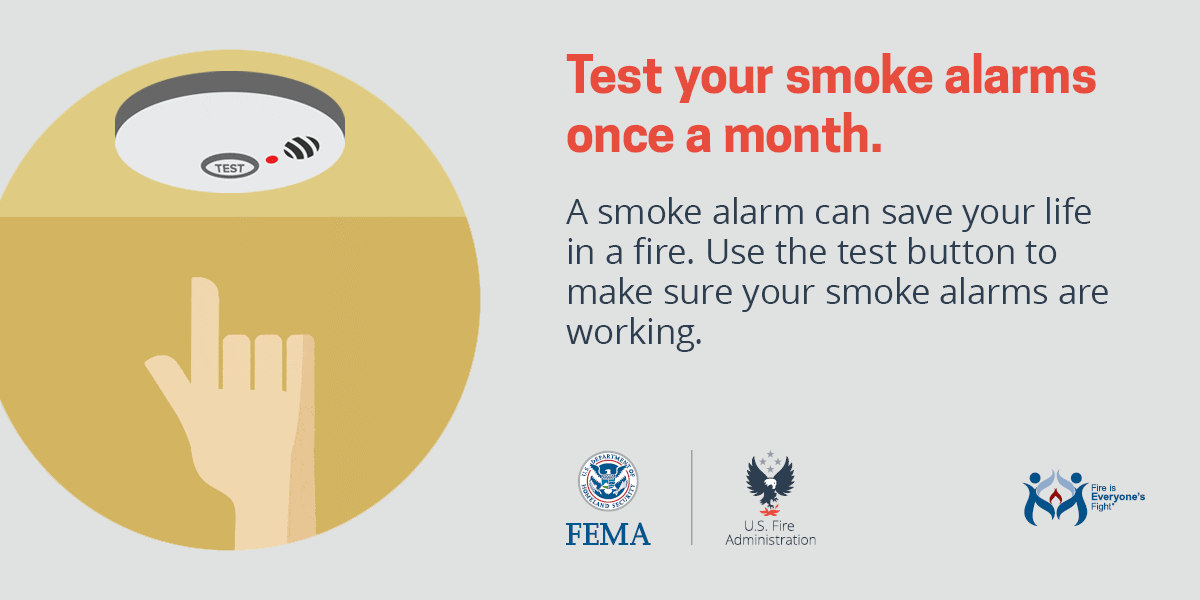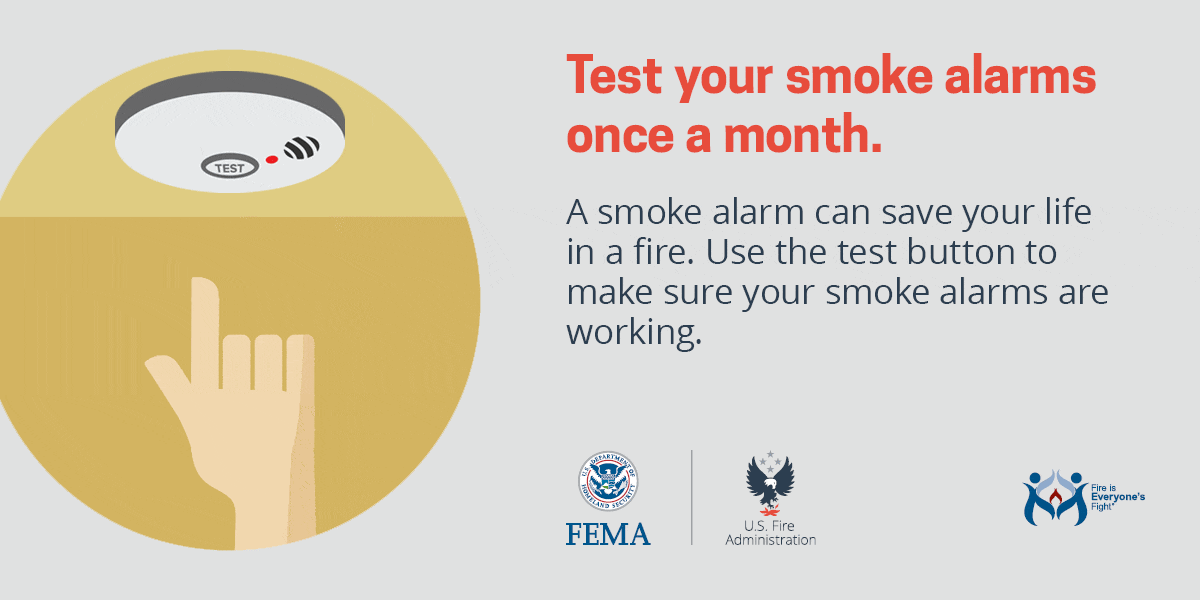Fire Emergency Services
You could have as little as two minutes to get out safely once the smoke alarm sounds. Working smoke alarms give you early warning so you can get outside quickly.
Installation
- Install smoke alarms in every bedroom, outside each separate sleeping area (like a hallway), and on each level (including the basement) of the home.
- When installing, follow the instructions that come with the smoke alarm.
- For the best protection, interconnect all smoke alarms. When one sounds, they all sound. It is important to have interconnected smoke alarms if you sleep with the bedroom doors closed.
- A smoke alarm should be on the ceiling or high on a wall.
How to Choose an Alarm
It is important to purchase a smoke alarm that is listed by a qualified testing laboratory. The two most common types of smoke alarms are ionization and photoelectric alarms.
- For the best protection, or where extra time is needed to wake up or help others, both types of alarms or dual sensor ionizationphotoelectric alarms are recommended.
- An ionization smoke alarm is more responsive to flaming fires and a photoelectric smoke alarm is more responsive to smoldering fires.
- Photoelectric smoke alarms are the best type of alarms to be installed near the kitchen and bathrooms to reduce nuisance alarms.
Testing and Maintenance
- Test smoke alarms at least once a month by pushing the test button.
- Follow the manufacturer’s instructions for cleaning to keep smoke alarms working.
Replacement
- Smoke alarms with nonreplaceable (long-life) batteries are designed to remain effective for up to 10 years. If the alarm chirps, warning that the battery is low, replace the entire smoke alarm right away.
- For smoke alarms that do not have non-replaceable (long-life) batteries, replace batteries at least once a year. If the alarm chirps, replace only the battery.



